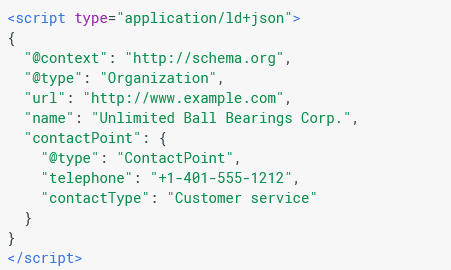It seems like every company, big or small, has a blog nowadays, but does blogging help SEO? It sure does, and few companies capitalize on their blog content to drive SEO gains, which can be a crucial component in a growing business’ success.
Here are 9 essential steps that can help your company reap SEO blogging benefits:
- Create a captivating title tag for your blog.
Don’t just name your website’s blog title “Blog”. There are 100s of blogs out there, and the first step you can take in making your blog section stand out from the rest is through unique branding. Naming your blog is an optimization opportunity, so when you name your blog, ask yourself a few questions:
- What is the overarching theme of your blog?
- What would be a captivating description in your industry?
- Can you incorporate important SEO keywords in the blog title/name?
- More specifically, WHO are you trying to reach?
Additionally, the meta description should accurately describe the purpose of your blog. This is where you can increase the click-through rate (CTR). Like the title tag, it’s important to have a unique meta description that includes a call to action!
- Reach your targeted audience with EVERY blog post.
The ideal way to increase your blog’s popularity is to keep your targeted audience in mind while creating every blog post. This is especially true if you practice an account-based marketing approach to customer targeting. Continuing to create content that is relevant and rewarding to a segment of your targeted audience will increase your authority in the industry. Each blog post should have target keywords that relate to the specific needs of your customers.
Creating content that is new and specific to your targeted audience will keep them coming to your site again and again.
Another important aspect to keep in mind when targeting keywords on specific blog posts is to focus on a maximum of 1-2 keywords/phrases. Throwing in too many keywords/phrases into your posts can hurt your SEO, because search engines view this as keyword stuffing. Uphold the readership and integrity of your blog posts by honing in on essential keywords and using them in a natural manner.
- Implement a smart URL structure.
While URL structure may not directly impact rankings, an efficient structure can improve CTR and make your links more appealing in the SERPs.
When creating URLs for individual blog posts, marketers often resort to including every single word in the title of that blog post, creating overly long and hard to read URLs. The key here is to create a blog URL that is both descriptive of what is on the page, but also concise.
Another consideration for URL structure is reporting efficiency. Oftentimes companies do not include “/blog/” in their URL structure. This can make it difficult to track page progress within Google Analytics. By including “/blog/” in your URL structure, you improve the ease of reporting for your site.
- Continue to optimize your blog posts.
One of the best ways you can continue to generate steady traffic to your blog is by optimizing your existing blog posts on a regular basis. Reviewing your current blog posts and identifying on-page revisions for SEO will be your key to success. Here are a few SEO tips for optimizing your blog pages:
- Add an internal linking structure to other pages within your site.
- Add optimized images or begin to optimize existing images.
- Link one blog post to another related blog post, such as this post on SEO blogger writing.
- Review all of your blog title tags and meta descriptions. Make sure all include target keywords and fall within Google’s title tag/meta description length.
Optimizing your site’s already existing blog posts will save your company time and resources.
- Identify where your blog is lacking.
Take a closer look on your own or meet with your team to identify the high-priority keywords/phrases for which you want your site to rank. Does your website/blog lack the content to rank for these industry keywords? If it does, then these are great topics for new blog posts. Keeping the SEO tips listed here in mind when creating new content will boost the organic growth of your site!
- Add optimized images into your blog posts.
Including images on your blog posts helps create positive user engagement! Adding easy-to-understand ALT tags helps describe the image to Google and other search engines. This tactic is also great for people with vision impairments who are using screen readers.
Additionally, instead of raw image filenames like “IMG2684286.jpg,” try optimizing images for SEO by writing something more descriptive (like with ALT tags). For example, “skydiver.jumping.sky.jpg.” Having descriptive image filenames is helpful for users who find your images in search, as well as for Google, which uses these filenames as a snippet of search results.
In other words, the more descriptive your blog post images are, the better!
- Mark up your blog posts.
You’ve got those SEO blogging basics down, but don’t forget about structured data markups! Structured data helps provide Google explicit clues about the meaning of a page. Structured data markups can be added to your HTML code and may help improve the way your page is shown on the SERP.
Be sure you are following Google’s structured data guidelines here, and get on your way to rich results display.

- Make sure your blog is mobile-friendly.
Mobile usage has surpassed desktop usage, especially when it comes to content consumption. It’s important to know that Google has been displaying mobile-friendly results FIRST since the Penguin algorithm in April 2015, so ensuring your site/blog is mobile-friendly should be of the highest priority.
Has your site been disregarding its mobile usability? If so, make sure your site has a “responsive design.” In other words, it should have an interchangeable user experience on both desktop and mobile. If the design of your site is different on mobile than it is on desktop, user experience may be considered poor. Make sure your designs align and ensure URLs are the same on all devices.

- Take advantage of your social media presence.
Sharing your blog posts on social media has many advantages:
- Your social media channels will remain current and relevant. Companies often struggle with what they should post on their social media. Blog posts are a great option!
- It helps keep your target audience engaged. By sharing your blog posts on various social media channels, you are increasing the likelihood of users viewing it, as well as keeping them interested!
- Google considers the social signals of your site. Having a social media presence improves your SEO results and increases referral traffic.
You should always share your blog posts on social media channels. When sharing them, be sure to include a couple of sentences briefly summarizing the blog post. Include those targeting keywords and watch those rankings soar.
Keep in mind, a blog is one of the many ways you can boost traffic to your site. If you are looking to optimize your blog to help with SEO, following these steps will be hugely beneficial in the engagement of your blog. Don’t be alarmed if you’re not seeing immediate growth, as SEO is a gradual process that takes time. If you are mindful in your choices while blogging for SEO and patient in the process, you’ll be pleasantly SERP-rised.
We put out tips like these every week. Subscribe to our newsletter for industry trends and more important insights delivered to your inbox.
If you need help implementing any of these steps in optimizing your blog for SEO or if you have questions about your site’s current performance, contact us for a free consultation of your website today.


